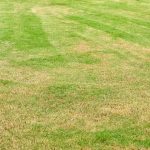Most homeowners tend to overlook minor plumbing problems like a slow-draining sink, a dripping faucet, or a slightly discolored wall near a pipe. These seem like harmless inconveniences, especially when they don’t disrupt day-to-day life. What many fail to realize is that these seemingly small issues can silently escalate into significant health hazards over time. Plumbing is an important part of maintaining a safe and sanitary living environment, and when it’s neglected, it can lead to more than just a hefty repair bill—it can impact your health. This article explores the various ways small plumbing problems can turn into major health risks and why addressing them promptly is crucial for you and your family’s well-being.
Mold and Mildew
Mold and mildew often thrive in hidden, moist areas caused by small plumbing leaks, such as behind walls, under sinks, or beneath floorboards. These fungi can release spores into the air, triggering respiratory problems, allergic reactions, and even long-term health conditions in sensitive individuals. If left unchecked, mold growth can spread quickly, compromising both air quality and structural integrity. A California plumbing company recently noted that many homes they service have undetected leaks contributing to significant mold issues. This highlights the importance of addressing even minor plumbing problems early to prevent the kind of moisture buildup that mold and mildew depend on to grow.
Water Contamination and Gastrointestinal Illnesses
Small plumbing failures, such as cracked pipes, loose joints, or degraded seals, can allow contaminants to enter your water supply. This includes bacteria, pesticides, heavy metals, and other pollutants that pose serious risks to human health. When contaminated water is used for drinking, cooking, or bathing, it can lead to gastrointestinal infections, nausea, diarrhea, and other more severe health conditions. Particularly vulnerable populations, such as young children and the elderly, are at greater risk. Regular plumbing maintenance and prompt attention to leaks or signs of discoloration in water are vital steps in protecting your household from unsafe water.
Structural Damage Leading to Airborne Particulates
A minor leak that seems insignificant can gradually damage your home’s structure, especially in wooden beams, drywall, and insulation. Over time, this damage may release dust, fiberglass particles, or even lead-based materials into the air. Inhaling these particles can lead to allergic reactions, skin irritation, and long-term respiratory problems. These airborne pollutants often go unnoticed until symptoms start appearing. Properly sealing leaks and inspecting your plumbing system for hidden damage reduces the chances of these materials becoming airborne and entering your living spaces.
Increased Pest Infestations That Spread Disease
Dripping faucets and leaky pipes waste water and attract pests like cockroaches, rodents, and mosquitoes, all of which thrive in damp environments. These pests are more than just an annoyance—they are vectors for a range of diseases, including salmonella, hantavirus, and West Nile virus. Even if you regularly clean your home, plumbing issues can make it a breeding ground for these unwanted guests. Regular plumbing inspections and swift repairs help ensure your home remains dry and less attractive to disease-carrying pests.
Hidden Sewage Backups and Harmful Bacteria
When small blockages in your plumbing system are ignored, they can eventually lead to sewage backups. Raw sewage contains a cocktail of dangerous bacteria, viruses, and parasites, such as E. coli and hepatitis A, which can easily spread if the issue isn’t caught in time. The health risks of exposure to sewage are substantial, including skin infections, respiratory issues, and gastrointestinal distress. The danger is even greater if contaminated water seeps into floors or walls, making it harder to detect and clean. Preventative maintenance and professional drain cleaning are essential in avoiding this health hazard.
Humidity Imbalance and Worsening Indoor Air Quality
Constant plumbing leaks, especially in hidden areas, can lead to elevated humidity levels inside your home. This disrupts the indoor air balance and can affect HVAC systems, reduce oxygen levels, and make your home feel clammy and uncomfortable. Poor air quality is directly tied to conditions like headaches, fatigue, and respiratory issues. For individuals with allergies, high humidity can intensify symptoms. Dehumidifiers can help manage symptoms temporarily, but identifying and fixing the root cause—leaking pipes or fixtures—is the long-term solution to restoring healthy indoor air quality.
Small plumbing issues are more than just minor nuisances—they are silent threats to your health and the overall safety of your home. From mold growth and water contamination to pest infestations and air quality degradation, the risks associated with ignoring these problems are wide-ranging and serious. The good news is that most of these issues are preventable with timely attention and routine maintenance. Investing in professional plumbing inspections and acting swiftly on small signs of trouble can save you from costly repairs and protect your family’s health in the long run. Don’t wait for a drip to become a flood—your home and your health depend on it.











